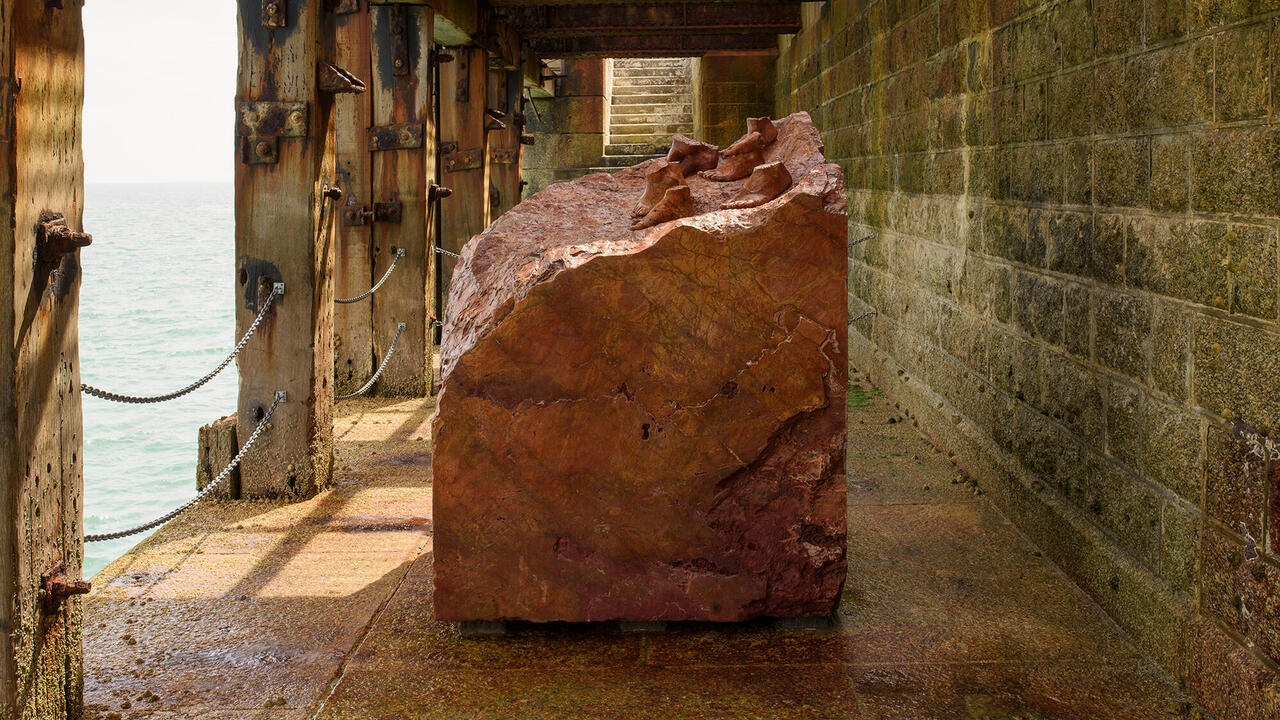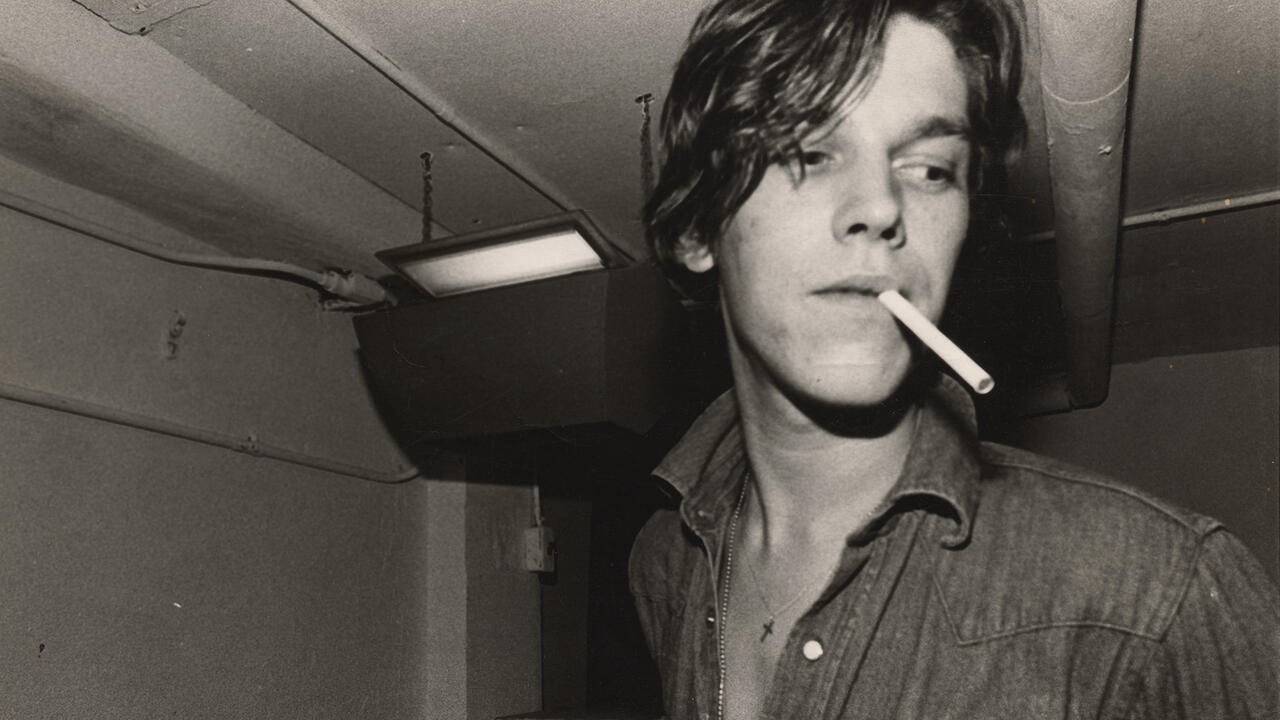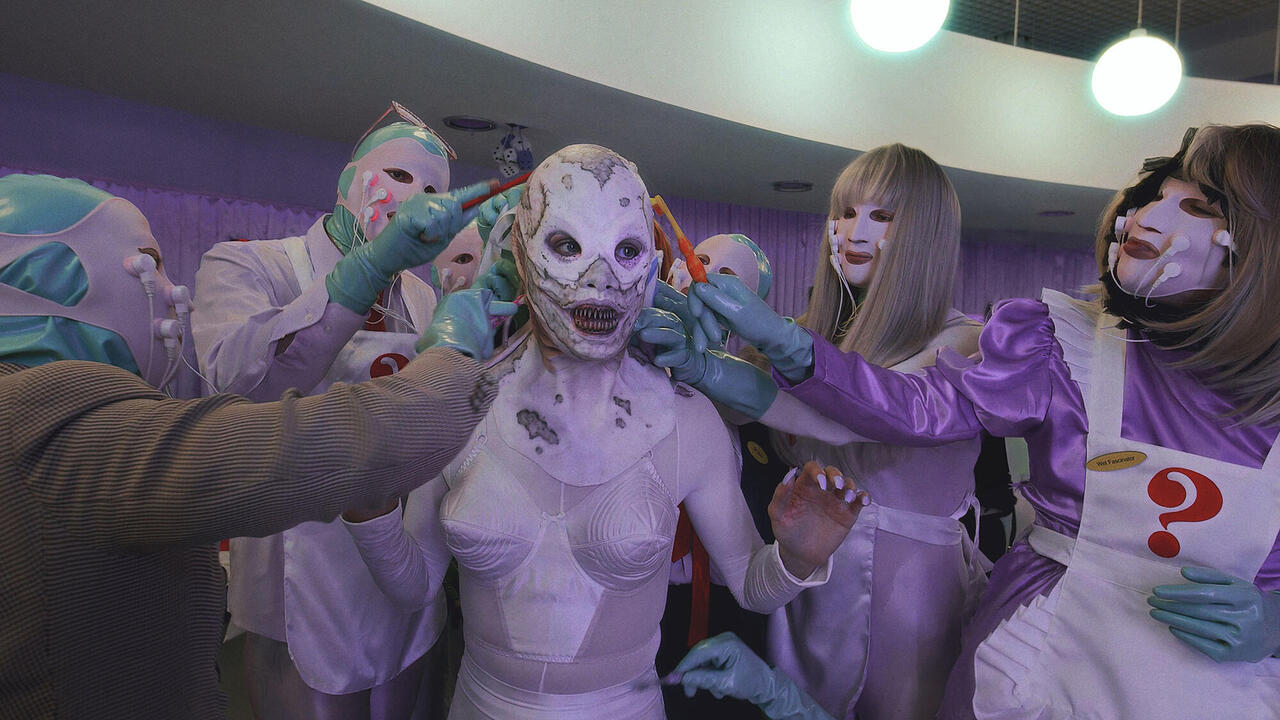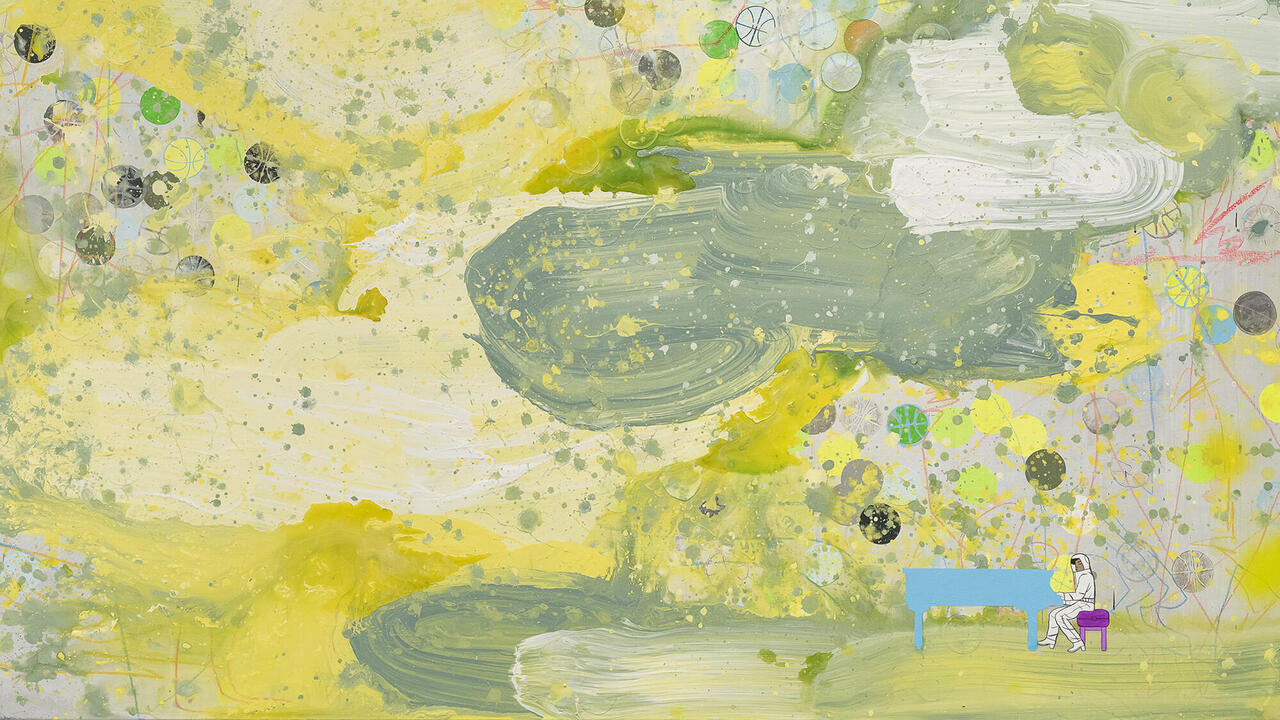Firelei Báez’s Enchanting Visions of Caribbean Mythology
At South London Gallery, the artist weaves folklore, history and personal narratives into a vibrant tapestry exploring cultural identity and imagination
At South London Gallery, the artist weaves folklore, history and personal narratives into a vibrant tapestry exploring cultural identity and imagination

For ‘Sueño de la Madrugada (A Midnight’s Dream)’, Firelei Báez’s first UK solo exhibition, South London Gallery becomes a vibrant twilight zone. In the show’s titular installation (all works 2024), vast swathes of fluttering ultramarine fabric cloak the walls and ceiling. Oval perforations in the cloth allow heavenly white light to shine through, dappling the floor below. Plants, including aralia, eucalyptus and thyme, adorn the lower reaches of the canopy, while the space is filled with a harmonic soundtrack of recordings the artist made in the Caribbean and nearby Peckham Rye.

On parallel walls, two aluminium pieces – Numinous (the beautiful terror of eternity) and Joy out of fire (speaking to the space you fill and you keep) – flash with glittery acrylic protrusions of aquatic green and intergalactic purple. Exploring the possibilities contained within Afro-Caribbean archetypes, Báez depicts Ciguapas: mythical female creatures, with inverted feet and untamed manes, who served as cautionary figures in Dominican Republic folklore. As I fathom the infinite expanses of these beings – fauna extended into flora, human blended with non-human – I become aware of their freedom from the constraints of embodiment.

The show continues across the road, where Báez draws on antiquarian maps and books to examine the historic limitations of social identity. Amidst the future and the present, time is a memory table, for instance, uses excerpted texts and maps to chart the British classification and commodification of exploited Black bodies in the Caribbean. Affixed to the wall in the form of a floating island, the original documents have been overpainted with bursts of pigment, colour-blocked circles and serpentine figures who metamorphose into artillery. These works simultaneously expand, immersing viewers in a gestalt effect of meaning, and contract, causing us to focus on the minutiae – a signature interplay in the artist’s practice. The resultant palimpsests prompt audiences to re-imagine the ambiguity and agency of Ciguapas within the context of the asymmetrical power dynamics that Báez reappraises.
The artist returns to her ungovernable heroines in a room containing the series ‘A power visible to itself’, four walls of floor-to-ceiling panoramic paintings, each more than three meters in height. Their palette reflects the sanguine romance of Somerset, where Báez, while on residency with Hauser and Wirth, poured and pooled paint onto these canvases. Here, painterly physicality overwhelms the senses: marbled and saturated drips initially seem beyond cognition. In time, forms shimmer between botany and geometry, à la Hilma af Klint, while boundless, faceless bodies emerge. My vertiginous experience of these sublime works reminds me of Søren Kierkegaard’s claim in The Concept of Anxiety (1844) that dizziness is a symptom of freedom.

The force of Báez’s work lies in its indexicality. The canopy in ‘Sueño de la Madrugada’, for instance, has the quality of memory, evoking waves, trees and a star-studded firmament. The aluminium Ciguapas serve as potent records of Báez’s collaboration with the environment: traces of petals, grasses and insects are embalmed in their glaze. The paintings in ‘A power visible to itself’ have a bodily presence of their own, which is attributable not only to their shape and size but also to the energy, via Afro-Caribbean epistemology, with which Báez imbues them. The suffusive blue across the exhibition gestures to the Òrìṣà Yemọja, a Yoruba deity of the sea, and the myth of Drexciya, whereby the children of pregnant women thrown overboard from slave ships formed an underwater civilization. Báez transmits the regenerative experience of Black and Indigenous matriarchs to audiences who, if sensorially receptive, leave the exhibition embodying potential for their personal and political transformation.
Firelei Báez’s ‘Sueño de la Madrugada (A Midnight’s Dream)’ is at South London Gallery until 08 September
The exhibition is curated by the 2023–24 New Curators fellows. New Curators offers aspiring curators from lower socio-economic backgrounds a paid, 12-month intensive curatorial training from its base at the South London Gallery.
Main image: Firelei Báez, Sueño de la Madrugada (A Midnight’s Dream) (detail), 2024, blue textile, dimensions variable. Courtesy: the artist and Hauser & Wirth; photographer: Above Ground






















